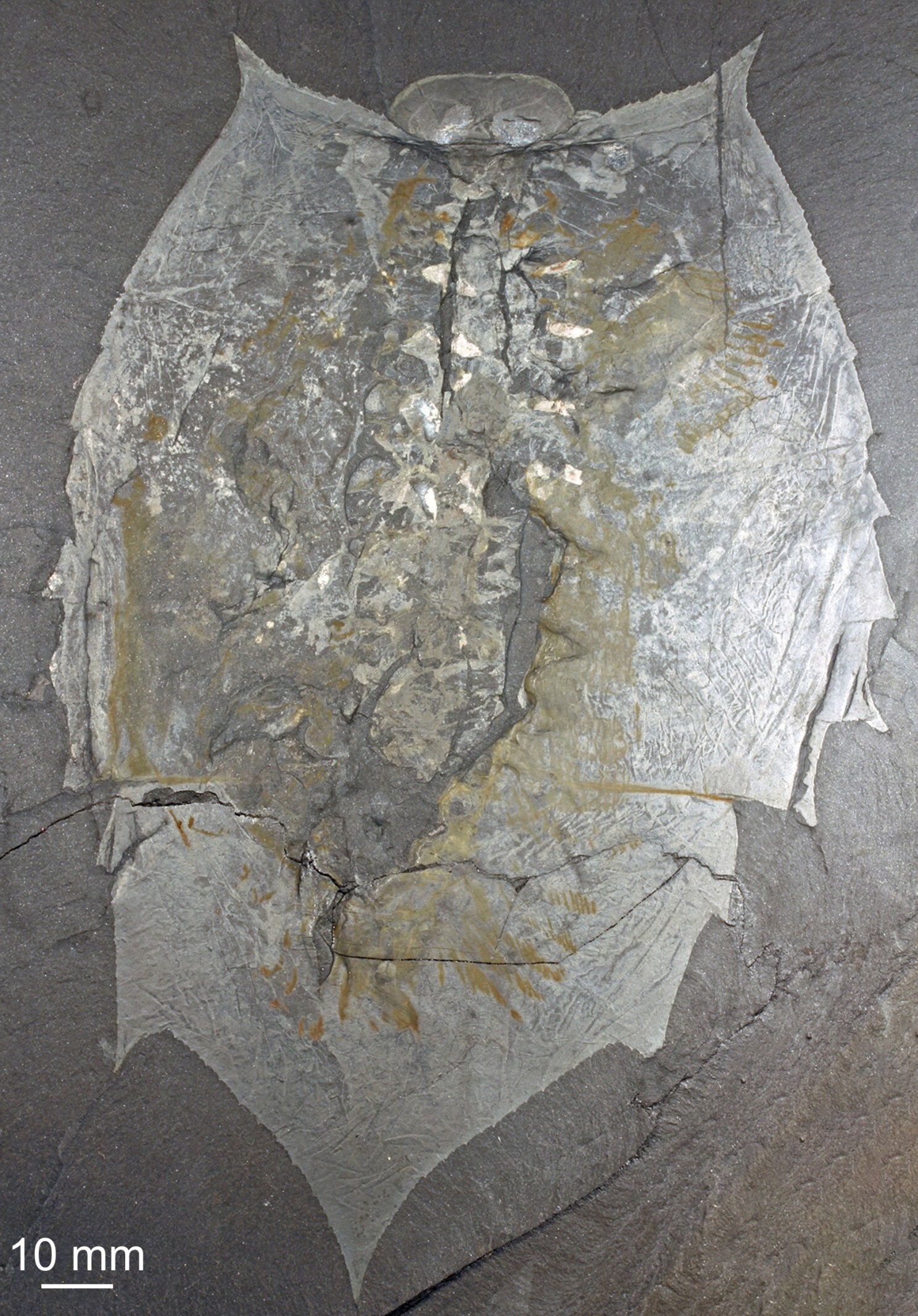Solving a 100-year anthropod mystery

Shedding light on the Cambrian arthropod Helmetia expansa.
For over a century, the Cambrian arthropod Helmetia expansa remained a mystery. Discovered by paleontologist Charles Doolittle Walcott in 1918, it was initially classified as a crustacean. Despite frequent mentions in research papers, this species has never been formally described, and only one specimen has ever been illustrated.
Now, in a new study published in the Journal of Systematic Palaeontology, Harvard researchers led by Sarah Losso, postdoctoral fellow in the Department of Organismic and Evolutionary Biology, formally describe Helmetia expansa, offering new insights into its anatomy, behavior, and evolutionary relationships.
Helmetia expansa belongs to a rare group of early arthropods called concilitergans. These extinct anthropods lacked calcified exoskeletons, so their remains only fossilized under exceptional conditions — like those in the 508-million-year-old Burgess Shale of Canada, where even soft tissues like guts, legs, and gills were preserved.
Although more specimens were collected, only one individual of Helmetia expansa had been figured and no study examined additional material in detail to formally describe the species or clarify concilitergan evolution. “We need to study more than one specimen to see the species’ full range of morphology and preservation,” said Losso.
The team examined 36 specimens, at the Smithsonian Institution and the Royal Ontario Museum, from the Cambrian Period of the Burgess Shale. They photographed the specimens, both wet and dry, using a polarizing filter to better reveal subtle features and extinction phases, and compared them to related species found in the Chengjiang biota in China, and from the early Cambrian Sirius Passet in Greenland.
Helmetia had a leaf-like exoskeleton, with some specimens preserving eyes, medial eyes, digestive systems, and limbs. Early arthropods had limbs with a walking leg for locomotion and food capture, and a gill used for respiration. On the holotype, only the gills are visible — leading past researchers to believe Helmetia lacked legs and swam exclusively. But, the team found broad gills and walking legs in several specimens, showing it likely walked like trilobites.
Even more surprising were two specimens caught in the early stages of molting, a behavior never before documented in concilitergans.
“All arthropods molt their hard exoskeletons to grow, but no one had seen this behavior before in a concilitergan because you have to catch a specimen in the act of molting, and it’s difficult to get just the right timing,” said Losso.
The molting specimens show the new exoskeleton closer to the edge of the head, suggesting the animal exited the front of the body — similar to horseshoe crabs, which use an anterior exit strategy.
The researchers also discovered a wide range of adult body sizes. While the smallest specimen was only 92 millimeters long, one exceeded over 180 millimeters. “These patterns tell us not only how these 508-million-year-old animals grew, but how big they could get,” Losso said.
Based on updated interpretations of Helmetia expansa’s morphology, the researchers confirmed two main helmetiids groups: the Helmediidae (which includes Helmetia expansa) and is characterized by segment boundaries and side spines, and Tegopeltidae, which are marked by segment fusion and a lack of spines. The researchers also assigned Arthroaspis bergstroemi, known from Greenland since 2013, to the group Conciliterga.
“Our findings give a much fuller picture of what Helmetia looked like, how it lived, and how concilitergans are related to each other,” Losso said, “which is very important for future studies on Conciliterga and other early arthropods.”





